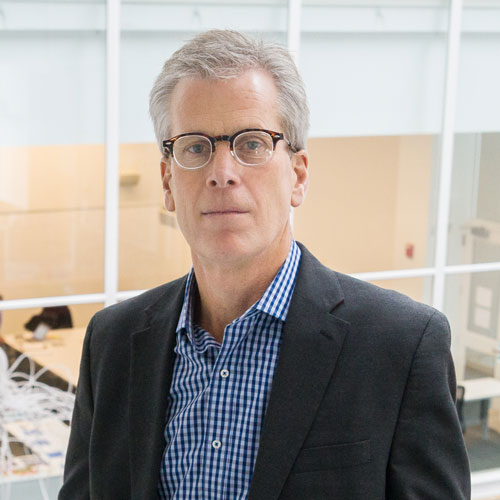
With more than 30 years accrued in the design and construction business, Carol Warkoczewski, AIA, MSOLE, is one of Texas’ foremost industry leaders, and she uses her industry acumen to serve as San Antonio’s city architect.
In her position, Warkoczewski oversees a staff of 23, including professional licensed architects and landscape architects, assistant project managers, and other support staff. She also is responsible for managing building and park projects throughout the city—often as many as 70 to 80 projects at any given time.
“One of the things I love about San Antonio is that it’s a very family-oriented city, and focused on improving the lives of its citizens,” she says. “So, things like art, they recognize its importance and incorporate it into all public spheres.”
Before taking the position in 2012, Warkoczewski ran Synergy Builders, which provided outside consulting for architectural/engineering companies, contractors, and facility owners, and she also worked for the University of Texas System office in Austin. In 2010, she founded the Institute for Leadership in Capital Projects (I-LinCP), a nonprofit that serves to engage all parts of the design/construction industry.
Warkoczewski recently took time out of her busy schedule to discuss her job, San Antonio’s design history, and the importance of I-LinCP.
Why were you interested in becoming the city architect of San Antonio?
I’ve been involved in public projects for most of my career. Even when I first started out, as a young architect, I did a lot of higher-education projects, public projects for public universities, as well as hospital-type work. I think you have to have a heart for public work, and my heart is towards helping people live their life, so being a city architect, you really get to have an influence on the city of San Antonio and its citizens.
What are some of the chief responsibilities of your job?
On a day-to-day basis, I assist the project managers and our staff to be successful. What does success look like for them for a capital program? We have to have projects that come in on budget, within schedule and to the quality that we require. Those are the three legs and if one of those legs falls short, your project won’t be a success. My job is to help the project managers bring those projects in on time and on budget with our quality. A lot of my job is also to be a buffer between my staff and upper administration, to help get information up and down the chain-of-command. And, a lot of what I do is making sure there is effective communications throughout the project team and to help solve problems.
How would you characterize the architectural style of San Antonio?
San Antonio is a very historic city. People always talk about the Alamo, and of course, we now have the World Heritage designation. The mission style, the thick-walled stucco is definitely here, but it’s also gone through a transformation through its time. We have the colonial period, and there are a lot of big mansions, wood-detailed, but there’s also the hill country with lots of limestone. I think I would say the style overall is very eclectic. Now, with new developments we’re seeing the introduction of more modern styles, especially geared toward the younger generations, but what I see is that the good architects are reflecting—even in this modern approach—the traditions of historic styles, which gives continuity and balance to the city’s aesthetic.
Is it hard to keep your personal architectural style from taking over?
One of the things I try hard not to do in this position is have undue influence on the design architects. Every architect has their own style, and we want variety and the excitement that variety brings to San Antonio. Any vibrant city is able to incorporate all of that. When it comes to what I want, I have to subdue that in a certain way and look at it from a bigger perspective of how the facility meets the needs of our departmental clients and our citizens.
You are also the founder of the Institute for Leadership in Capital Projects (I-LinCP). Can you talk about how you became involved with that?
I founded that organization as a result of my consultancy business (Synergy Builders) that I was doing since 2001, and was doing a lot of partnering workshop facilitation, team building workshops, consulting in organizational development. Then I got my Masters in Organization Leadership & Ethics in 2005, and that’s what pushed me into starting I-LinCP. In doing all my consulting work, I was really paying attention to how people were working together. I felt we needed to do a better job in the design and construction industry. There’s a lot of waste in the way we deliver projects and the way teams typically do not work together collaboratively or effectively, for many reasons. I was looking at the cost of poor communication and the cost of mistrust between team members. I wanted to bring together not just the project team, but as an industry, the architects, engineers, contractors, and the facility owners, and have a conversation about what we could do to make things better. I did the first Leadership in Capital Projects Forum in 2009 and at the end of the conference, people suggested I start a 501(c)(3) and do these all over Texas. I became enthusiastic about it and had three conferences that year. In 2010, I formed a nonprofit, got a board, and did some more conferences. Now, in 2015, we are a full-fledged organization, with multiple chapters.
How does your involvement help you in your role with the city?
It really keeps me in touch with the industry because I get to interface with other architects, engineers, contractors, and other facility owners. It keeps me engaged with the community and the design construction profession, and that’s an important role for me.


